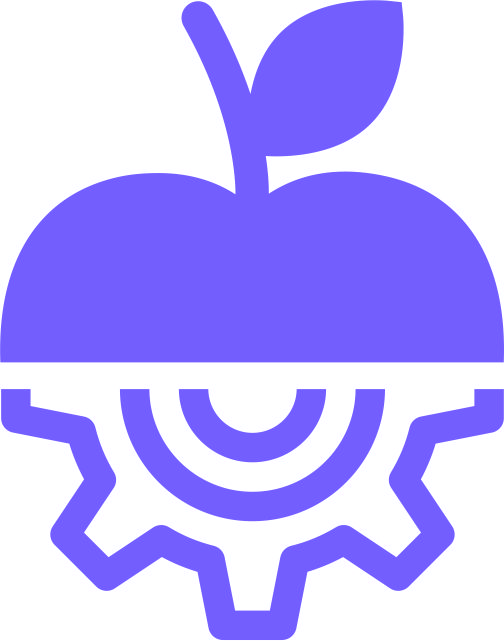Abstract
Milk and dairy products are traditional components of Russian diet. In difficult economic conditions, dairy import tends to decrease, and the national dairy industry tries to compensate for it. Today, the cheese consumption in Russia is below the rational standard, which makes it necessary to boost the domestic cheese production. The authors studied the cheese segment of the domestic dairy industry to analyze the possibilities of increasing cheese production. The research relied on the leadership criteria and the main industrial indicators in the regions, e.g., raw materials and production infrastructure, which were subjected to statistical and mathematical processing. The data were systematized by a set of indicators with precalculated statistical characteristics, which made it possible to rank the national cheese leaders. The organic index of cheese products was measured based on the protocol proposed by the authors. The correlation analysis revealed the links between the gross cheese production in the regions and their raw material supply.The Russian Federation produces more than 900,000 tons of cheese and cheese products and imports 300,000 tons. The current per capita consumption of cheese is 6.5 kg per year, but domestic companies provide only 4.2 kg, i.e., 60% of the rational consumption rate. The list of the cheese leaders includes 38 regions, 20 of which provide more than 78% of the total national production, with the Altai Region leading the way. However, some of these cheese-making regions are currently experiencing an acute shortage of dairy raw materials, while some milk-producing regions have a poor processing infrastructure that cannot support cheese production. The national dairy industry has not enough raw materials as a result of a long-term dairy cattle decrease over the past two decades. A sustainable raw material base for cheese making needs 1.2 million more cows to increase the gross milk production by 9.8 million tons (29.6% of the data for 2022).
“The cheese issue” can be resolved by increasing the population of pedigree dairy cattle and encouraging farmers to start cheese dairy businesses. Both measures require strong federal and regional support.
Keywords
Cheese production, leadership, regions, ranking, consumption, rational norms, food security, raw materials baseREFERENCES
- Plante AM, McCarthy AL, O'Halloran F. Cheese as a functional food for older adults: Comparing the bioactive properties of different cheese matrices following simulated gastrointestinal in vitro digestion. International Journal of Food Sciences and Nutrition. 2021;72(4):456–469. https://doi.org/10.1080/09637486.2020.1825644
- Panasenko SV, Suray NM, Tatochenko AL, Rodinova NP, Ostroukhov VM. Sustainable raw material base as a factor of competitiveness of cheese-making enterprises. Food Processing: Techniques and Technology. 2022;52(4):706–717. (In Russ.) https://doi.org/10.21603/2074-9414-2022-4-2400
- Mordvinova VA. Possible ways to reduce the cost of cheesemaking products. Cheesemaking and Buttermaking. 2022;(4):22–23. (In Russ.) https://doi.org/10.31515/2073-4018-2022-4-22-23
- Kamath R, Basak S, Gokhale J. Recent trends in the development of healthy and functional cheese analogues–A review. LWT – Food Science and Technology. 2022;155:112991. https://doi.org/10.1016/j.lwt.2021.112991
- Levkin A. Cheese prospects. Cheese production may exceed 1 million tons by 2030. Agroinvestor. 2023;(6). [cited 2024 Mar 27] (In Russ.) Available from: https://www.agroinvestor.ru/markets/article/40410-syrnye-perspektivy-proizvodstvo-syrov-mozhet-perevalit-za-1-mln-t-k-2030-godu/
- Prosekov AYu. Russia on the world cheese market: prospects of development. Cheesemaking and Buttermaking. 2018;(6):4–6. (In Russ.) https://elibrary.ru/YZKXZJ
- Kazantseva EG, Lyamkin II. The impact of value chains on food security. Food Processing: Techniques and Technology. 2022;52(2):282–295. (In Russ.) https://doi.org/10.21603/2074-9414-2022-2-2363
- Yormirzoev M, Teuber R, Li T. Food quality vs food patriotism: Russian consumers’ preferences for cheese after the food import ban. British Food Journal. 2019;121(2):371–385. https://doi.org/10.1108/BFJ-02-2018-0088
- Suray NM, Tatochenko AL, Terekhova AA, Mikhalev AP, Korneva GV. Cheese-making regions: From local cheese varieties to regional brands. Cheesemaking and Buttermaking. 2024;(1):10–25. (In Russ.) https://www.doi.org/10.21603/2073-4018-2024-1-2
- Kavas N. Yogurt-like product from lupine (Lupinus albus L.) milk as an alternative to dairy products. Foods and Raw Materials. 2022;10(2):377–385. https://doi.org/10.21603/2308-4057-2022-2-546
- Larionov GA, Efimov AV, Zhukov AA. Determining cow's milk raw suitability for the Suluguni cheese production. Bulliten KrasSAU. 2022;(1):189–196. (In Russ.) https://doi.org/10.36718/1819-40362022-1-189-196
- Karimi E, Yari M, Ghaneialvar H, Kazemi HR, Asadzadeh R, et al. Effects of dust phenomenon on heavy metals in raw milk in western Iran. Foods and Raw Materials. 2020;8(2):241–249. http://doi.org/10.21603/2308-4057-2020-2-241-249
- Suray NM, Tatochenko AL, Krasil'nikova EA, Teplaia NA, Mikhalev AP, et al. Dairy production in the Chuvash Republic: Success factor analysis. Food Processing: Techniques and Technology. 2023;53(4):718–730. (In Russ.) https://doi.org/10.21603/2074-9414-2023-4-2473
- Gorelik AS, Rebezov MB, Gorelik OV. Technological parameters for the production of soft cheese depending on the linear origin of cows. Agrarian science. 2023;(9):64–68. (In Russ.) https://doi.org/10.32634/0869-8155-2023-374-9-64-68
- Strekozov NI, Konopelko EI. Optimal structure of high producing dairy herd and intensity of heifer rearing. Achievements of Science and Technology in Agro-industrial Complex. 2013;(3):5–6. (In Russ.) https://elibrary.ru/PXWWPR
- Musina ON, Grishkova AV, Prosekov AYu. Domestic self-sufficiency in milk-converting enzymes. Dairy industry. 2024;(1):24–27. (In Russ.) https://doi.org/10.21603/1019-8946-2024-1-10
- Vasiliev IV, Alimova NA, Kiselev SV, Klevakina MP, Obychayko EE, et al. Agriculture in Russia 2023: Statistics. Moscow: Rosstat; 2023. 103 p. (In Russ.)
- Egorenko SN, Garin VV, Gokhberg LM, Zarova EV, Ivanov YuN, et al. Russia and countries of the world 2023: Statistics. Moscow: Rosstat; 2023. 393 p. (In Russ.)
- Shishkin GI, Dunin IM, Tyapugin EE, Gerasimova EV, Myshkina MS, et al. Yearbook of breeding in Russia’s dairy cattle farms. Moscow: All-Russian Research Institute of Cattle Breeding; 2023. 254 p. (In Russ.)
- Belov AN, Koval AD, Pushkarev VA, Mironova AV, Shcherbakov DN, et al. The first experience of using domestic recombinant chymosin in the production of cheese with a low temperature of the second heating. Cheesemaking and Buttermaking. 2022;(3):28–32. (In Russ.) https://elibrary.ru/AZIFXG
- Orlov VV, Fisunov SA, Udovik EE, Korneva GV. Analysis of the current state of the economic complex of a federal subject in the aspect of implementation of reindustrialization processes (based on the example of the Republic of Chuvashia). 2024;2(3):96–110. (In Russ.) https://doi.org/10.36871/ek.up.p.r.2024.03.02.011

